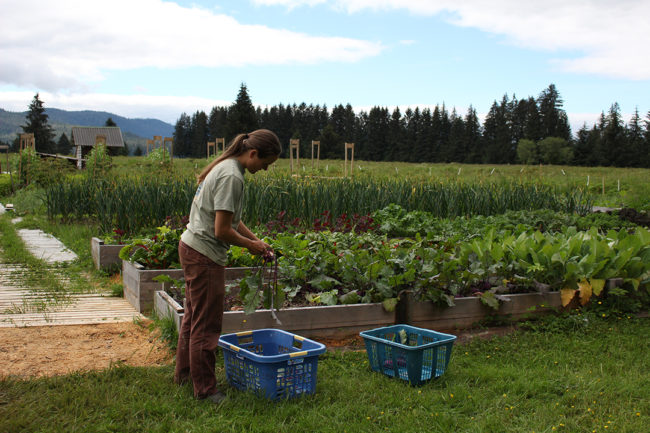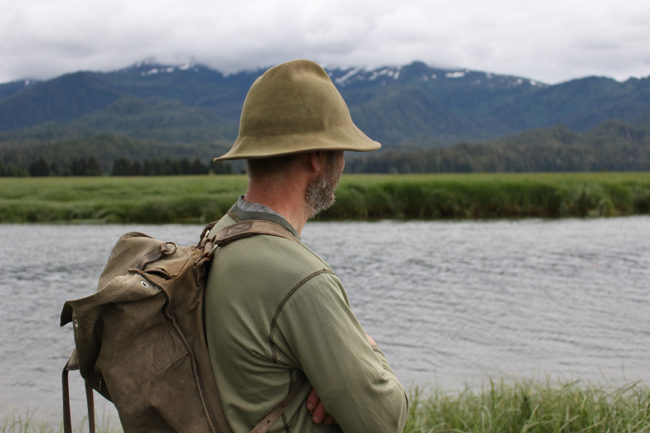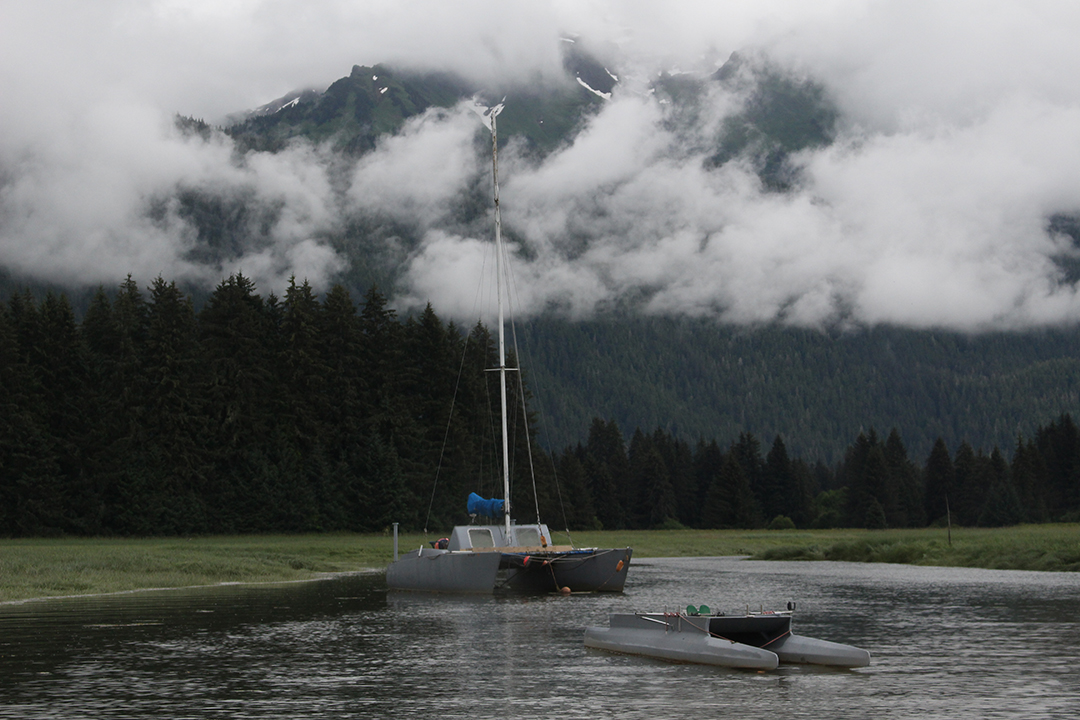
It’s peak season for farmer’s markets across the country right now. Transporting goods usually means loading up a truck with produce, but selling in Southeast Alaska presents some unique challenges.
Scott Roberge navigates his skiff to Farragut Bay. He’s the owner of Tongass Kayak Adventures, a company that gives tours and charters tourists to remote locations. Today, we’re visiting an off-the-grid farm that supplies its produce to the Petersburg farmers market, grocery store, school cafeteria, and a local restaurant. It’s more than just a little off the beaten path; it takes us about an hour to there.
“They’re gonna take about four and half hours. “They don’t use as much fuel as we’re using today. But we’re gonna get there quicker,” says Roberge.
We cruise into shallow water, passing a sailboat catamaran that Farragut Farms uses to transport up to 1,000 pounds of vegetables every other week, but the trip’s not over yet. “We have to go to a little side slough. Then we’ll anchor the boat and hike into the farm.”
After a short walk through spongy marsh, we arrive at Bo Varsano and Marja Smets homestead. The electricity runs entirely off solar panels. There’s no sewer system or running water. They have a rain catchment for bathing, doing dishes, and watering plants. Varsano has lived at the location for about 20 years, and they’ve been farming about five.
“Yeah, I definitely fell in love with the place before I fell in love with him,” Smets says with a laugh. Almost everything at the farm, they’ve built. Like a special gate and electric fence to keep the moose out.
“We’re kind of in a unique position of there’s just two of us and we’re remote enough. We can’t hire anybody. We have to get creative.” says Varsano.
That’s meant designing greenhouse on wheels and inventing vessels to transport the goods. Varsano says Southeast Alaska can be a tricky place to farm. There’s inclement weather, a lack of tenable land, stretches of wet decomposing soil or muskeg.
“It’s pretty hard to grow a garden in that. And that’s pretty common in Southeast. A lot of people who try to grow gardens, who even have farms, run into that.”

Despite those challenges, there’s a growing demand for fresh, local food. Farragut Farms transport their produce about 30 miles to Petersburg. It may seem like a long trip, but the bulk of grocery store products travel thousands of miles to Southeast Alaska.
Lisa Sadleir-Hart is the president of the Sitka Local Foods Network and serves on the Alaska Food Policy Council. She says as recently as 50 years ago, Alaskans were providing about 50 percent of what they ate. Now, an estimated 95 percent of food comes from somewhere else. There are environmental and health implications to that, but Sadleir-Hart says the area’s remoteness is also fueling the local foods movement.
“It wouldn’t take much for our food supply to be pretty impacted in the case of natural disaster or in Seattle if they couldn’t get the barges in. We would all be in pretty deep in in terms of food security.”
Creating local food systems can also mean more economic independence for Alaskans. The Petersburg Economic Development Council recently applied for a $25,000 grant from the USDA to fund farmer’s market promotions. Liz Cabrera, the coordinator for the PEDC, says she looks at it as growing one small business at a time.
“It adds an element of economic diversity to our local economy. It also adds, in general, an increased sense of resilience where we’re not as dependent on something being brought in from down south.”
Part of the grant money, if awarded, would go toward hiring a part-time market organizer and developing a Southeast Alaska Growers conference in Petersburg. As it stands, there aren’t any networking opportunities to discuss the unique challenge farmers face in the region.
“Mostly we’re isolated in our own towns doing our own thing and not really talking to each other that much,” says Varsano.

The couple hopes by communicating with other small growers in the area, the local foods movement will continue to thrive.
“We’re not alone. There’s a lot of other people who are starting up or running small farms. To be able to be able to put all our heads together and learn from one another would be really, really valuable,” says Smets.
Varsano and Smets finish packing the rest of the kohlrabi for the farmer’s market. To make it on time, they’re leaving on their catamaran sailboat at midnight. Farming in Alaska is hard work, but Varsano insists they wouldn’t have it any other way.
“Although we complain about it and it’s long and sometimes cold and rainy. It’s beautiful. It’s pretty easy to kind of invent your own life here.”